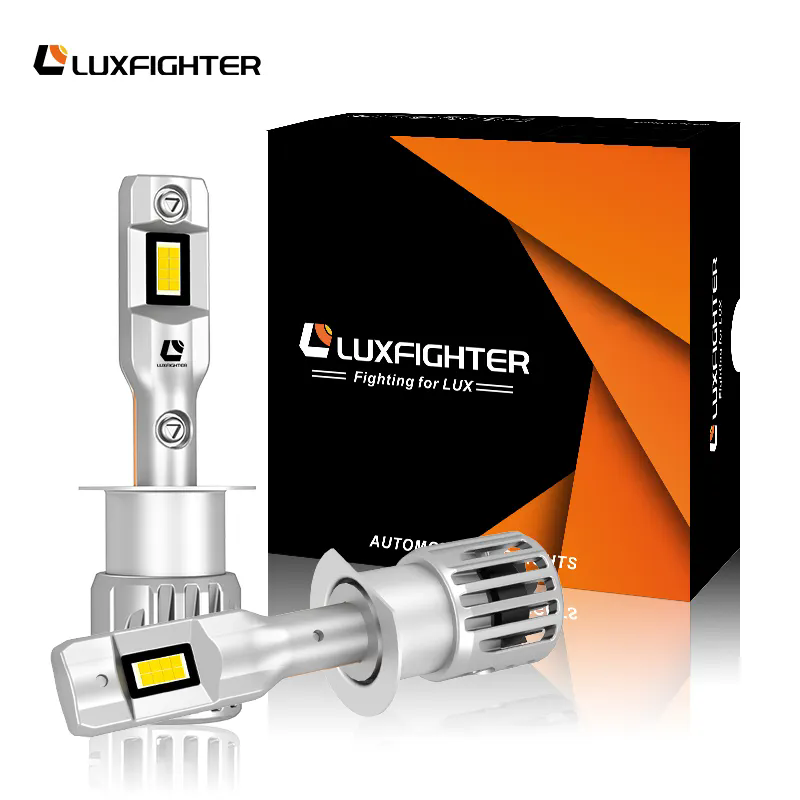Illuminate the Road Ahead: A Guide to H1 LED Auto Headlights
2024-08-09
When it comes to driving safety, visibility is paramount. Whether you're navigating through a dark highway or making your way through foggy conditions, having the right headlights can make all the difference. The H1 LED headlight is a popular choice among drivers seeking to upgrade their vehicle’s lighting system. Combining modern LED technology with the traditional H1 form factor, these headlights offer superior brightness, energy efficiency, and longevity.
What is an H1 LED Headlight?
The H1 LED headlight is a type of automotive headlight bulb designed to fit vehicles that use the H1 socket. The "H1" refers to the specific shape and size of the bulb's base, which has been a standard in the automotive industry for decades. Originally, H1 bulbs were halogen, but with advancements in LED technology, H1 LED bulbs have become a popular aftermarket upgrade.
LED, or Light Emitting Diode, headlights use semiconductor technology to produce light. Unlike traditional halogen bulbs, which rely on a filament that heats up to produce light, LEDs generate light through the movement of electrons within the semiconductor material. This makes LED headlights much more efficient and longer-lasting than their halogen counterparts.
Key Advantages of H1 LED Headlights
Switching to H1 LED headlights offers several benefits that enhance both driving safety and vehicle performance:
1. Superior Brightness: LED headlights are significantly brighter than halogen bulbs. They produce a more intense, focused beam of light that illuminates the road ahead more effectively, allowing you to see further and react faster to obstacles or changes in road conditions.
2. Energy Efficiency: LEDs consume less power than halogen bulbs, which can reduce the load on your vehicle’s electrical system. This efficiency not only conserves energy but also contributes to better fuel economy, especially in vehicles with heavy electrical demands.
3. Longevity: LED bulbs have a much longer lifespan than halogen bulbs—often lasting up to 30,000 hours or more. This means fewer replacements and lower maintenance costs over the lifetime of the vehicle.
4. Instant On/Off: LED headlights reach full brightness instantly, unlike halogen bulbs that take a moment to warm up. This instant illumination can be crucial in situations where quick response time is needed, such as flashing your headlights or using high beams.
5. Cooler Operation: LED headlights generate less heat compared to halogen bulbs. This reduces the risk of overheating and can extend the lifespan of the headlight components, including the surrounding housing and lens.
6. Modern Aesthetic: Beyond functionality, LED headlights offer a sleek, modern look that can update the appearance of older vehicles, giving them a contemporary edge.
Installing H1 LED Headlights
Installing H1 LED headlights is generally straightforward, but it’s important to follow the correct procedure to ensure optimal performance and safety:
1. Check Compatibility: Before purchasing H1 LED bulbs, verify that they are compatible with your vehicle’s headlight housing and electrical system. Some vehicles may require additional components, such as a CANbus adapter, to prevent issues like flickering or error messages on the dashboard.
2. Gather Tools: You’ll typically need basic tools like a screwdriver and possibly pliers, depending on your vehicle’s headlight assembly.
3. Remove the Old Bulbs: Start by turning off the vehicle and allowing the headlights to cool down. Open the hood and locate the back of the headlight assembly. Remove the cover and disconnect the wiring harness from the old H1 halogen bulb. Carefully remove the bulb by unscrewing or unclipping it, depending on your vehicle.
4. Install the LED Bulbs: Insert the new H1 LED bulb into the socket, ensuring that it is securely in place. Reconnect the wiring harness and replace the headlight cover. It’s important to avoid touching the LED bulb with your bare hands, as oils from your skin can reduce its lifespan.
5. Test the Lights: Once the installation is complete, turn on your vehicle’s headlights to ensure that the new LED bulbs are functioning properly. Check both low and high beams, and adjust the headlight alignment if necessary to avoid blinding other drivers.
6. Enjoy Enhanced Visibility: With your new H1 LED headlights installed, you can drive with greater confidence, knowing that you have superior illumination to guide you.
Choosing the Right H1 LED Headlights
When selecting H1 LED headlights, there are a few factors to consider to ensure you get the best performance:
- Brightness (Lumens): Look for LED bulbs with a high lumen output for maximum brightness. However, be cautious not to choose bulbs that are too bright, as this can cause glare and be dangerous for oncoming traffic.
- Color Temperature: LED headlights come in various color temperatures, measured in Kelvin (K). A color temperature around 6000K produces a bright white light that closely resembles daylight, offering the best visibility without being too harsh.
- Build Quality: Invest in LED bulbs from reputable manufacturers known for high-quality construction. Features like an aluminum body, built-in cooling fan, and IP67 waterproof rating can ensure durability and reliable performance in all weather conditions.
- Beam Pattern: Ensure the LED bulb produces a focused beam pattern that matches your vehicle’s headlight housing. A good beam pattern provides even road illumination without creating dark spots or excessive glare.
Conclusion
H1 LED headlights represent a significant upgrade over traditional halogen bulbs, offering enhanced brightness, energy efficiency, and longevity. Whether you’re looking to improve nighttime visibility, reduce maintenance costs, or simply modernize the appearance of your vehicle, H1 LED bulbs are an excellent choice.
By understanding the benefits and installation process, you can make an informed decision and enjoy a safer, more comfortable driving experience. With the road ahead clearly illuminated, you’ll be better equipped to handle whatever challenges the journey brings.



